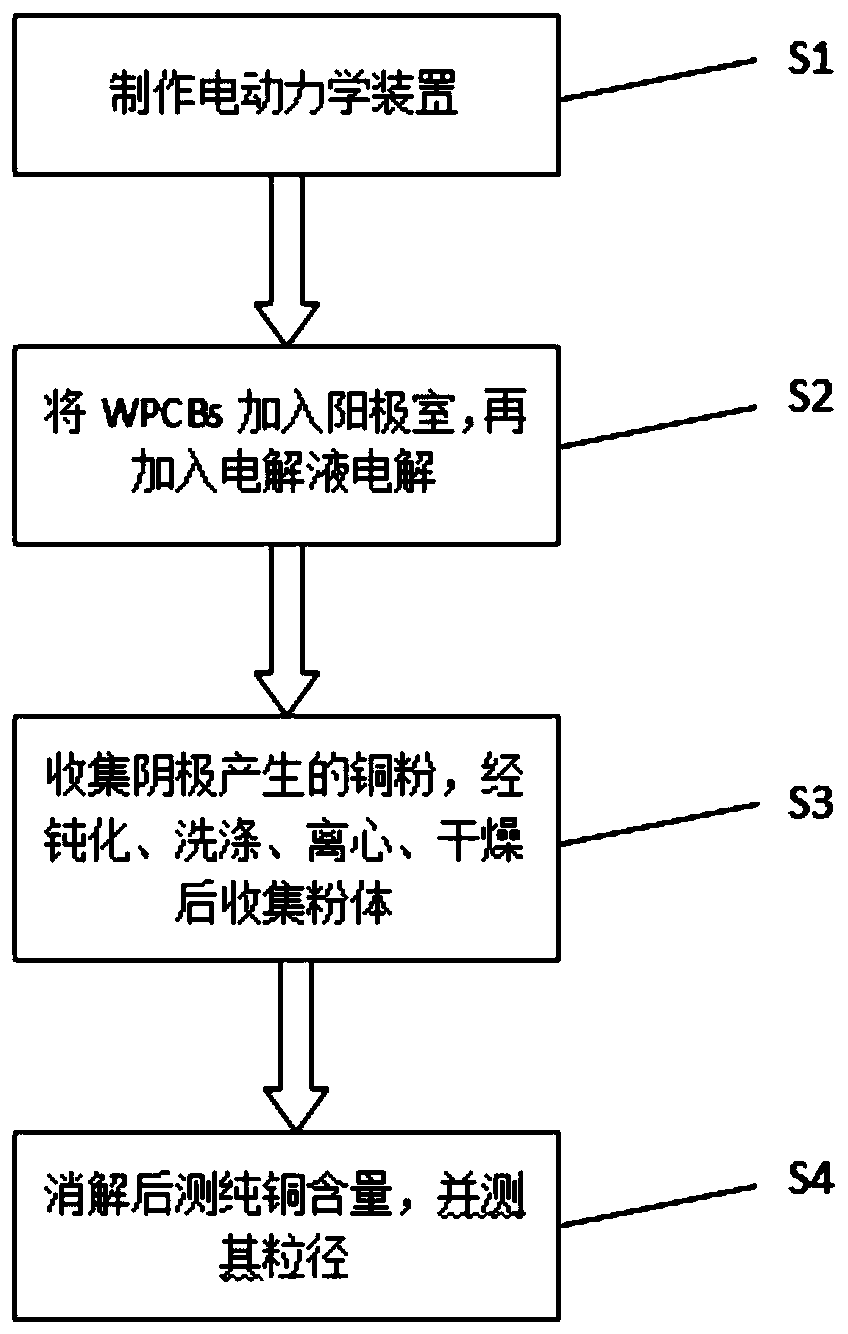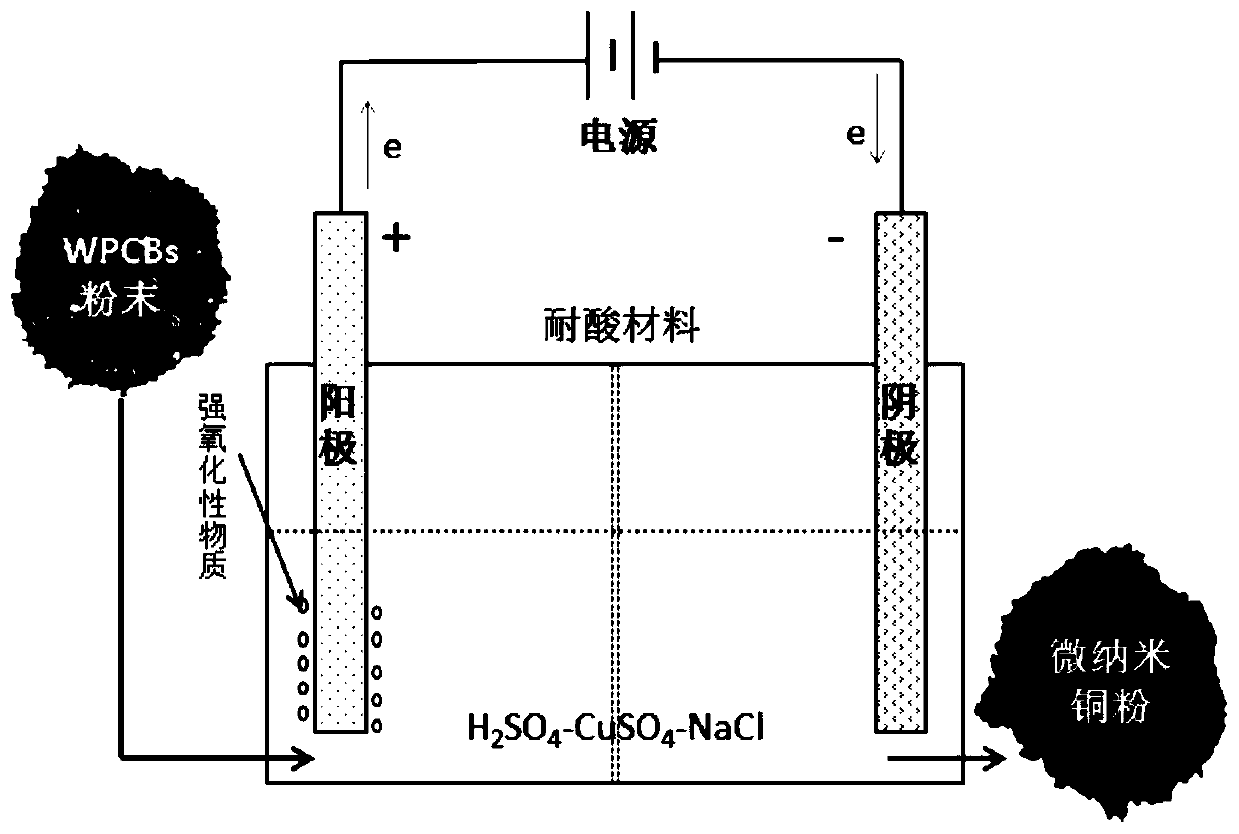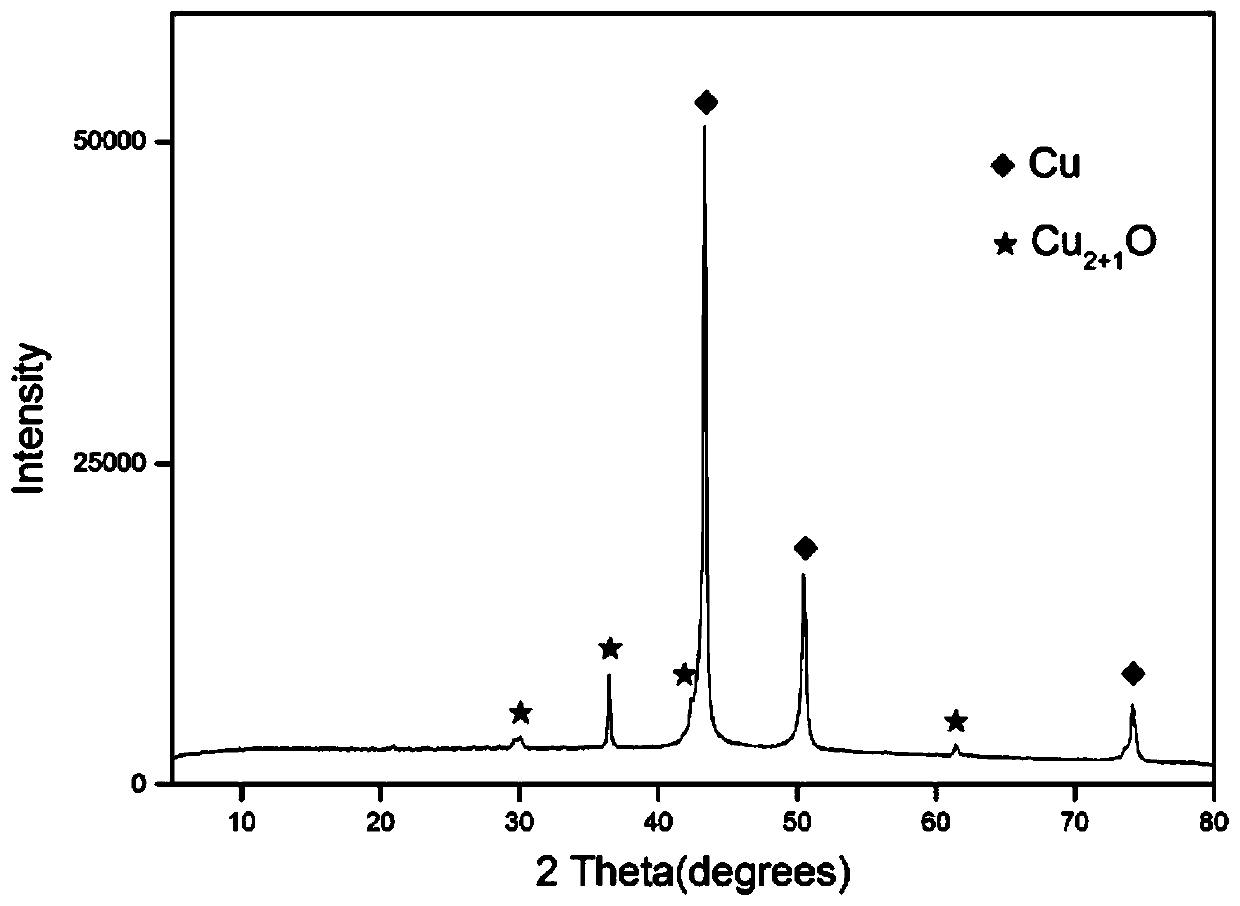Method for recovering micronano copper powder from waste printed circuit boards
A printed circuit board, micro-nano technology, applied in electrolytic components, electrolytic processes, electrodes, etc., can solve the problems of uneven particle size frequency distribution, large particle size of copper powder, etc., so as to avoid secondary pollution and improve electronic conductivity. , the effect of simple recycling process
- Summary
- Abstract
- Description
- Claims
- Application Information
AI Technical Summary
Problems solved by technology
Method used
Image
Examples
Embodiment 1
[0027] First, 6 g of metal-enriched body powder with a copper content of 80.34% after mechanical crushing and sorting was weighed and placed in the anode chamber, and a copper plate with a size of 6 cm×7 cm and a ruthenium-coated titanium plate were used as the cathode and anode, respectively; 200 mL electrolyte, the electrolyte composition is CuSO 4 ﹒ 5H 2 O (Cu 2+ 30 g / L) + NaCl (Cl - 60 g / L)+H 2 SO 4 (130 g / L) +PVP (4g / L); Ozone was introduced into the electrolyte in the anode chamber (connected to the ozone generator, the intake volume was 1.5 L / min); the power was turned on, and the current density was set to 80 mA / cm 2 , electrolysis 4h. After the electrolysis reaction is completed, the cathode copper plate and the copper powder deposited on the cathode are collected, and the copper powder obtained from the cathode is placed in a benzotriazole solution with a concentration of 5 g / L for passivation for 5 minutes to avoid its oxidation. Rinse three times with deio...
Embodiment 2
[0029] First, 6 g of metal-enriched body powder with a copper content of 80.34% after mechanical crushing and sorting was weighed and placed in the anode chamber, and a copper plate with a size of 6 cm×7 cm and a ruthenium-coated titanium plate were used as the cathode and anode, respectively; 200 mL electrolyte, the electrolyte composition is CuSO 4 ﹒ 5H 2 O (Cu 2+ 30 g / L) + NaCl (Cl - 60 g / L)+ H 2 SO 4 (130 g / L) +PVP (6g / L); Ozone is introduced into the electrolyte in the anode chamber (connected to the ozone generator, the intake air volume is 1.5 L / min); the power is turned on, and the current density is set to 80 mA / cm 2 , electrolysis 4h. After the electrolysis reaction is completed, the cathode copper plate and the copper powder deposited on the cathode are collected, and the copper powder obtained from the cathode is placed in a benzotriazole solution with a concentration of 5 g / L for passivation for 5 minutes to avoid its oxidation. Rinse three times with dei...
Embodiment 3
[0032] First, 6 g of metal-enriched body powder with a copper content of 80.34% after mechanical crushing and sorting was weighed and placed in the anode chamber, and a copper plate with a size of 6 cm×7 cm and a ruthenium-coated titanium plate were used as the cathode and anode, respectively; 200 mL electrolyte, the electrolyte composition is CuSO 4 ﹒ 5H 2 O (Cu 2+ 30 g / L) + NaCl (Cl - 60 g / L)+ H 2 SO 4 (130 g / L) +PVP (8g / L); Ozone was introduced into the electrolyte in the anode chamber (connected to the ozone generator, the intake volume was 1.5 L / min); the power was turned on, and the current density was set to 80 mA / cm 2 , electrolysis 4h. After the electrolysis reaction is completed, the cathode copper plate and the copper powder deposited on the cathode are collected, and the copper powder obtained from the cathode is placed in a benzotriazole solution with a concentration of 5 g / L for passivation for 5 minutes to avoid its oxidation. Rinse three times with dei...
PUM
| Property | Measurement | Unit |
|---|---|---|
| particle size | aaaaa | aaaaa |
| particle size | aaaaa | aaaaa |
| particle diameter | aaaaa | aaaaa |
Abstract
Description
Claims
Application Information
 Login to View More
Login to View More - R&D
- Intellectual Property
- Life Sciences
- Materials
- Tech Scout
- Unparalleled Data Quality
- Higher Quality Content
- 60% Fewer Hallucinations
Browse by: Latest US Patents, China's latest patents, Technical Efficacy Thesaurus, Application Domain, Technology Topic, Popular Technical Reports.
© 2025 PatSnap. All rights reserved.Legal|Privacy policy|Modern Slavery Act Transparency Statement|Sitemap|About US| Contact US: help@patsnap.com



